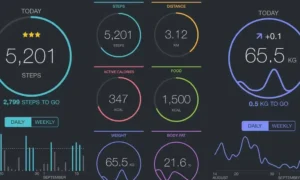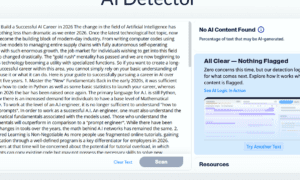Creating a robust financial model is crucial for any business or financial analyst aiming to make informed decisions and predictions. A well-structured model provides insights into a company’s financial health, enabling stakeholders to evaluate potential investments, forecast future performance, and understand the implications of various business scenarios. This guide offers essential tips for developing comprehensive financial models that are accurate, flexible, and easy to understand.
Define the Purpose of Your Model
Before diving into the intricacies of building a financial model, it’s crucial to clearly define its purpose. Understanding what you aim to achieve with your model helps ensure that it is tailored to meet those specific objectives. Whether the goal is to forecast future cash flows, evaluate a potential investment, or support business decision-making, a clear purpose guides the structure and complexity of the model. From the best excel add ins for financial modeling to industry-specific templates, having a defined purpose helps determine the tools and resources needed for successful financial modeling. This can ultimately save time, effort, and resources in the long run. Dedicating time to defining the purpose of your model is an essential first step in developing a comprehensive financial model.
Gather Relevant Data
Once you’ve defined the model’s purpose, gather all necessary data to support your assumptions and calculations. This includes historical financial statements, industry benchmarks, and economic indicators. Reliable data sources will enhance the credibility of your model.
Consider using multiple sources for validation. For example, cross-reference data from financial statements with industry reports or market analyses. This diligence will help ensure that the assumptions you use are based on solid evidence and realistic projections.
Use a Clear Structure
A well-organized model is easy to follow and comprehend. Start by creating a logical flow that separates different components, such as inputs, calculations, and outputs. Common sections of a financial model include:
- Input Assumptions: Key drivers such as revenue growth rates, expense ratios, and tax rates.
- Calculations: Intermediate calculations that lead to financial statements.
- Output Summary: The final outputs, including income statements, cash flow statements, and balance sheets.
Using separate tabs for different sections in Excel can also enhance clarity, allowing users to follow the logic without becoming overwhelmed by data.
Make Assumptions Explicit
Clearly outline all assumptions used in your model, including growth rates, cost structures, and market conditions. This transparency allows users to understand the rationale behind your projections and makes it easier to adjust assumptions if needed.
Using footnotes or a dedicated assumptions tab can be beneficial for documenting these details. Providing context for your assumptions can also enhance the model’s credibility and facilitate discussions with stakeholders.
Keep It Simple
While it might be tempting to create a complex model with intricate calculations, simplicity often leads to better usability. A complicated model can confuse users and lead to mistakes. Strive for a balance between detail and clarity.
Utilize Excel’s built-in functions and tools to keep calculations straightforward. For example, instead of nesting multiple functions together, consider breaking them down into separate steps. This approach makes it easier to trace errors and understand the logic behind each calculation.
Incorporate Flexibility
A comprehensive financial model should be flexible enough to accommodate various scenarios and assumptions. Consider creating separate input sections for different scenarios, such as best-case, worst-case, and base-case projections.
Using Excel’s data tables or scenario analysis tools can help facilitate this flexibility. By allowing users to adjust key inputs easily, the model becomes a powerful tool for analyzing the impact of different business strategies or economic conditions.
Ensure Accuracy and Consistency
Accuracy is paramount in financial modeling. Double-check all formulas and calculations to minimize errors. Utilizing Excel features like the “Trace Precedents” and “Trace Dependents” functions can help identify where values are coming from and how they’re being used.
Consistency is also essential. Use uniform formats for data entries, such as percentages, currency, and dates. Establishing a standard format will make it easier for users to interpret data and maintain a professional appearance throughout the model.
Test Your Model
Once your financial model is complete, it’s crucial to test it thoroughly. Run various scenarios to ensure that the model responds correctly to changes in input assumptions. This process can help identify weaknesses or flaws in the structure.
Consider conducting a sensitivity analysis to determine how changes in key inputs affect the model’s outputs. This exercise will help validate the robustness of your model and provide insights into which variables are most impactful.
Document Your Work
Good documentation is key to ensuring that your financial model is understandable and usable by others. Include comments within the model to explain complex calculations or assumptions. Additionally, providing a user guide can help others navigate the model effectively.
Documentation is also essential for maintaining the model over time. As business conditions change, the model may require updates. Clear notes and organized sections will make it easier for anyone to adapt the model to new circumstances.
Utilize Tools and Add-Ins
Enhancing your financial modeling process can be achieved through various tools and Excel add-ins. For example, add-ins that automate data retrieval, scenario analysis, and report generation can save time and reduce the potential for errors.
Seek Feedback from Peers
Once you have developed your financial model, seeking feedback from colleagues or peers can provide valuable insights. They may identify areas for improvement or highlight assumptions you may have overlooked. Constructive criticism can enhance the quality of your model and ensure it meets the needs of its intended users.
Consider conducting a review session where you walk through the model with a fresh set of eyes. This collaboration can lead to enhancements that improve the model’s clarity and functionality, ultimately resulting in a more robust financial analysis tool.
Before choosing add-ins, consider your specific needs and the types of analyses you frequently perform. Researching user reviews and recommendations can help you select tools that enhance your modeling capabilities effectively.
Developing comprehensive financial models is a vital skill for any financial analyst or business professional. By following these top tips, you can create robust models that provide valuable insights and support informed decision-making. From defining the model’s purpose to utilizing effective tools and add-ins, each step plays a crucial role in ensuring your financial models are accurate, flexible, and user-friendly.




































